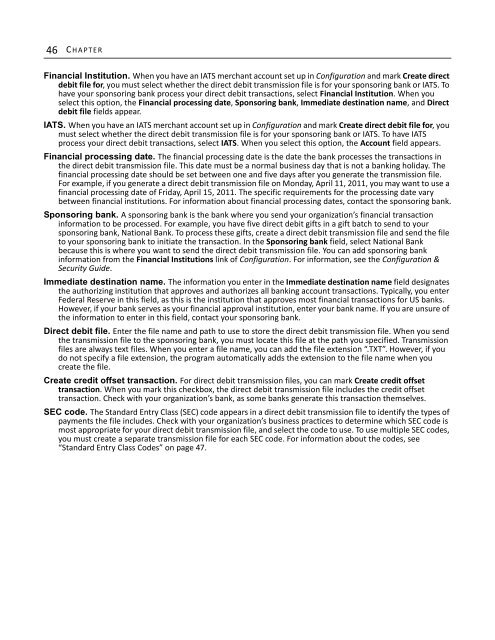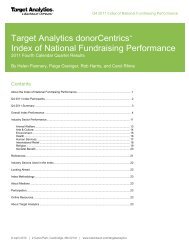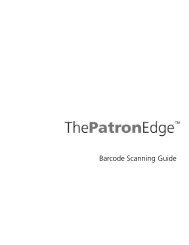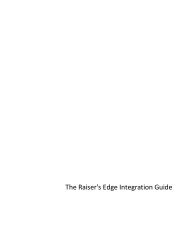Electronic Funds Transfer (EFT) Guide - Blackbaud, Inc.
Electronic Funds Transfer (EFT) Guide - Blackbaud, Inc.
Electronic Funds Transfer (EFT) Guide - Blackbaud, Inc.
- No tags were found...
You also want an ePaper? Increase the reach of your titles
YUMPU automatically turns print PDFs into web optimized ePapers that Google loves.
46 C HAPTERFinancial Institution. When you have an IATS merchant account set up in Configuration and mark Create directdebit file for, you must select whether the direct debit transmission file is for your sponsoring bank or IATS. Tohave your sponsoring bank process your direct debit transactions, select Financial Institution. When youselect this option, the Financial processing date, Sponsoring bank, Immediate destination name, and Directdebit file fields appear.IATS. When you have an IATS merchant account set up in Configuration and mark Create direct debit file for, youmust select whether the direct debit transmission file is for your sponsoring bank or IATS. To have IATSprocess your direct debit transactions, select IATS. When you select this option, the Account field appears.Financial processing date. The financial processing date is the date the bank processes the transactions inthe direct debit transmission file. This date must be a normal business day that is not a banking holiday. Thefinancial processing date should be set between one and five days after you generate the transmission file.For example, if you generate a direct debit transmission file on Monday, April 11, 2011, you may want to use afinancial processing date of Friday, April 15, 2011. The specific requirements for the processing date varybetween financial institutions. For information about financial processing dates, contact the sponsoring bank.Sponsoring bank. A sponsoring bank is the bank where you send your organization’s financial transactioninformation to be processed. For example, you have five direct debit gifts in a gift batch to send to yoursponsoring bank, National Bank. To process these gifts, create a direct debit transmission file and send the fileto your sponsoring bank to initiate the transaction. In the Sponsoring bank field, select National Bankbecause this is where you want to send the direct debit transmission file. You can add sponsoring bankinformation from the Financial Institutions link of Configuration. For information, see the Configuration &Security <strong>Guide</strong>.Immediate destination name. The information you enter in the Immediate destination name field designatesthe authorizing institution that approves and authorizes all banking account transactions. Typically, you enterFederal Reserve in this field, as this is the institution that approves most financial transactions for US banks.However, if your bank serves as your financial approval institution, enter your bank name. If you are unsure ofthe information to enter in this field, contact your sponsoring bank.Direct debit file. Enter the file name and path to use to store the direct debit transmission file. When you sendthe transmission file to the sponsoring bank, you must locate this file at the path you specified. Transmissionfiles are always text files. When you enter a file name, you can add the file extension “.TXT”. However, if youdo not specify a file extension, the program automatically adds the extension to the file name when youcreate the file.Create credit offset transaction. For direct debit transmission files, you can mark Create credit offsettransaction. When you mark this checkbox, the direct debit transmission file includes the credit offsettransaction. Check with your organization’s bank, as some banks generate this transaction themselves.SEC code. The Standard Entry Class (SEC) code appears in a direct debit transmission file to identify the types ofpayments the file includes. Check with your organization’s business practices to determine which SEC code ismost appropriate for your direct debit transmission file, and select the code to use. To use multiple SEC codes,you must create a separate transmission file for each SEC code. For information about the codes, see“Standard Entry Class Codes” on page 47.
















